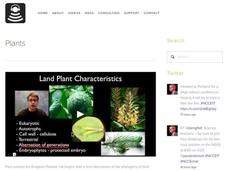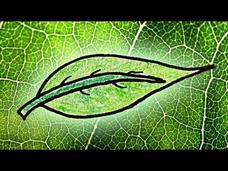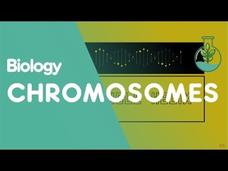Bozeman Science
Plants
Use a biology video to focus on four main groups of plants: bryophytes, ferns, gymnosperms, and anglosperms. It explains the parts of plants, life cyles, evolution of plants, and even touches upon sporophyte and gametophyte.
Crash Course
Plant Cells
Why can't plants escape prison? Because their cells were surrounded by walls. Introduce viewers to the evolution of plants with a video that discusses the differences between prokaryotic and eukaryotic cells, plant cells' organelles, and...
FuseSchool
Intro to Cells: Animal, Plant, Nerve and Red Blood Cells
Throw your dendrites in the air and wave 'em like you just don't care! An excellent video in the Fuse School playlist explains the parts and functions of cells. It describes their structures, functions, and specialties.
Crash Course
The Plants and the Bees: Plant Reproduction
This video explains the difference between gametophytes and sporophytes and uses this this information to teach the reproduction process of various vascular plants. Viewers see how ferns, gymnosperms, and angiosperms reproduce.
Teacher's Pet
Unique Features of Plant Cells
In plants, vacuoles take up most of the space in a cell. The video explains what vacuoles are and their importance. It also discusses the function of the cell wall and plastids, both unique features of plant cells.
FuseSchool
Transport in Plants, Part 1: Xylem and Phloem
Humans use their hearts and circulatory systems to move things through their bodies, but plants also have a transport system. The first video in a three-part series introduces the xylem and phloem. It explains what each part moves, which...
MinuteEarth
Why Are Leaves Green? Part 1
Consider a question that baffles even scientists. Why are leaves green? The video lesson offers a theory that begins with the first aquatic plants. Learners consider alternative explanations as well.
Curated OER
Photosynthesis: Light Reactions
This clip picks up right where the Khan Academy's Photosynthesis video left off. Chemicals such as hydrogen and compounds such as NADPH are reviewed along with details including the stroma, thylakoid, lumen, and grana. See the parts of a...
FuseSchool
Transport in Plants, Part 3: Phloem and Translocation
Leaves produce sugars through photosynthesis, but how do the sugars get to the rest of the plant? The final video in a three-part series within the Fuse School Biology playlist answers this question. It details how the phloem and...
FuseSchool
Plant Growth: Auxins and Gibberellins
Why does a plant grow toward the sun? The video, part of a Fuse School Plants playlist, explains the chemical processes behind plant growth. It details how auxins, gibberellins, and the sun work together. From curving plant stems to...
Bozeman Science
Plant Structure
Let's get to the root of biology. A video describes the difference between monocot and dicot plants. Then it explains the three main types of tissues in plants and the cells within each of these tissues.
NASA
The Water Cycle: Watering the Land
The oceans contribute 37 trillion tons of water to land masses in the form of rain and snow. The third in a four-part series from NASA show satellite animations highlighting the precipitation on Earth. The videos show the movement of the...
Crash Course
Photosynthesis
Seventy percent of the world's oxygen is produced through photosynthesis by phytoplankton, microscopic plants found in the ocean. Viewers learn about the complex process of photosynthesis with a video that covers both the light dependent...
FuseSchool
What Are Chromosomes?
Two meters worth of DNA fits into a cell that is only two micrometers wide thanks to chromosomes. A video, part of a Fuse School Biology playlist, explains what chromosomes are and how they work. It describes where they are found and how...
Crash Course
Great Glands - Your Endocrine System
Diabetes is the most common endocrine disorder in the United States, affecting about eight percent of the total population. The working parts of the endocrine system are examined in a video that demonstrates how cells receive information...
CK-12 Foundation
Ck 12: Plant Cell Structures: Parts of a Plant Cell
[Free Registration/Login may be required to access all resource tools.] Take a tour of a plant cell and see how they differ from animal cells. Also take a look at the unique characteristics that some plants have. [2:57]
Crash Course
Crash Course Biology #6: Plant Cells
Hank describes why plants are so freaking amazing - discussing their evolution, and how their cells are both similar to & different from animal cells. [10:28]
Bozeman Science
Bozeman Science: Plant Structure
Paul Andersen explains the major plants structures. He starts with a brief discussion of monocot and dicot plants. He then describes the three main tissues in plants; dermal, ground and vascular. He also describes the plant cells within...



















